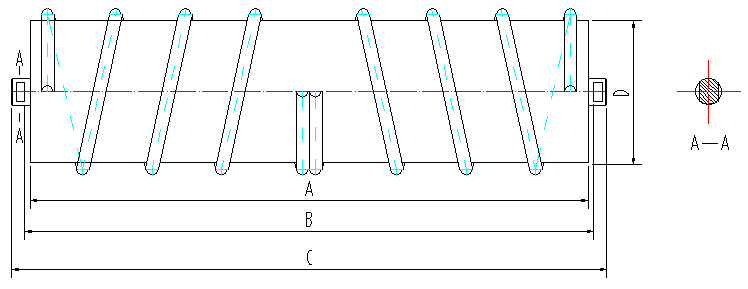 Afrikaans
Afrikaans  Albanian
Albanian  Amharic
Amharic  Arabic
Arabic  Armenian
Armenian  Azerbaijani
Azerbaijani  Basque
Basque  Belarusian
Belarusian  Bengali
Bengali  Bosnian
Bosnian  Bulgarian
Bulgarian  Catalan
Catalan  Cebuano
Cebuano  Corsican
Corsican  Croatian
Croatian  Czech
Czech  Danish
Danish  Dutch
Dutch  English
English  Esperanto
Esperanto  Estonian
Estonian  Finnish
Finnish  French
French  Frisian
Frisian  Galician
Galician  Georgian
Georgian  German
German  Greek
Greek  Gujarati
Gujarati  Haitian Creole
Haitian Creole  hausa
hausa  hawaiian
hawaiian  Hebrew
Hebrew  Hindi
Hindi  Miao
Miao  Hungarian
Hungarian  Icelandic
Icelandic  igbo
igbo  Indonesian
Indonesian  irish
irish  Italian
Italian  Japanese
Japanese  Javanese
Javanese  Kannada
Kannada  kazakh
kazakh  Khmer
Khmer  Rwandese
Rwandese  Korean
Korean  Kurdish
Kurdish  Kyrgyz
Kyrgyz  Lao
Lao  Latin
Latin  Latvian
Latvian  Lithuanian
Lithuanian  Luxembourgish
Luxembourgish  Macedonian
Macedonian  Malgashi
Malgashi  Malay
Malay  Malayalam
Malayalam  Maltese
Maltese  Maori
Maori  Marathi
Marathi  Mongolian
Mongolian  Myanmar
Myanmar  Nepali
Nepali  Norwegian
Norwegian  Norwegian
Norwegian  Occitan
Occitan  Pashto
Pashto  Persian
Persian  Polish
Polish  Portuguese
Portuguese  Punjabi
Punjabi  Romanian
Romanian  Russian
Russian  Samoan
Samoan  Scottish Gaelic
Scottish Gaelic  Serbian
Serbian  Sesotho
Sesotho  Shona
Shona  Sindhi
Sindhi  Sinhala
Sinhala  Slovak
Slovak  Slovenian
Slovenian  Somali
Somali  Spanish
Spanish  Sundanese
Sundanese  Swahili
Swahili  Swedish
Swedish  Tagalog
Tagalog  Tajik
Tajik  Tamil
Tamil  Tatar
Tatar  Telugu
Telugu  Thai
Thai  Turkish
Turkish  Turkmen
Turkmen  Ukrainian
Ukrainian  Urdu
Urdu  Uighur
Uighur  Uzbek
Uzbek  Vietnamese
Vietnamese  Welsh
Welsh  Bantu
Bantu  Yiddish
Yiddish  Yoruba
Yoruba  Zulu
Zulu conveyor drum lagging
The Importance of Conveyor Drum Lagging
Conveyor systems are vital components in various industries, facilitating the transport of materials such as coal, minerals, and aggregates. One crucial aspect of conveyor systems is the utilization of conveyor drum lagging, which plays a significant role in enhancing performance, efficiency, and durability. This article will explore the importance of conveyor drum lagging, its types, benefits, installation processes, and maintenance.
What Is Conveyor Drum Lagging?
Conveyor drum lagging refers to the process of applying a material to the surface of the conveyor drums (also known as pulleys). This layer of material improves the grip between the conveyor belt and the drum, reducing slippage and ensuring that the belt operates efficiently. Drums can be lagged using different materials, including rubber, ceramic, and other composite materials, depending on the specific application and environmental conditions.
Types of Conveyor Drum Lagging
There are several types of drum lagging materials, each offering unique advantages
1. Rubber Lagging This is the most commonly used type of lagging. Rubber offers excellent grip, flexibility, and durability, making it ideal for various applications. It also provides a cushioning effect, which helps to reduce wear and tear on the conveyor belt.
2. Ceramic Lagging This type is mainly used in applications involving heavy loads and high speeds. Ceramic lagging provides superior grip and is excellent for preventing slippage. It is particularly beneficial in environments where materials may be wet or greasy.
3. Polyurethane Lagging Known for its resistance to abrasion and wear, polyurethane lagging is suitable for environments that involve sharp or abrasive materials.
4. Composite Lagging Comprised of a combination of different materials, composite lagging is designed to maximize the benefits of various lagging types, offering both durability and performance.
Benefits of Conveyor Drum Lagging
The installation of drum lagging provides numerous benefits
1. Reduced Slippage The enhanced grip provided by lagging minimizes the likelihood of the conveyor belt slipping on the drums, ensuring that operations are smooth and efficient.
2. Extended Equipment Life By decreasing slippage and reducing the wear on both the belt and the drums, lagging contributes to extending the lifespan of conveyor components.
conveyor drum lagging

4. Cost Savings Reducing the wear and tear on conveyor belts and drums minimizes maintenance costs and the frequency of replacements, leading to significant savings in the long run.
5. Enhanced Safety Improved grip reduces the risk of accidents caused by slipping or misaligned belts, thereby contributing to a safer workplace.
Installation Process
The installation of drum lagging should be done by professionals to ensure safety and efficacy. The process typically involves
1. Cleaning The surface of the drum should be cleaned to remove any contaminants.
2. Preparation The lagging material is cut and prepared according to the size and specifications of the drum.
3. Adhesion A strong adhesive is applied to bond the lagging material to the drum.
4. Pressing The lagging material is pressed firmly against the drum surface to ensure a proper bond.
5. Curing The adhesive must be allowed to cure completely before the conveyor system is put into operation.
Maintenance Considerations
Regular inspections of lagged drums are essential to ensure that they are functioning correctly. Signs of wear, such as cracking or delamination, should be addressed promptly to avoid operational issues. Additionally, cleaning the lagged surface can help maintain grip and extend the life of the lagging.
Conclusion
Conveyor drum lagging is a critical component in ensuring the efficient and safe operation of conveyor systems. With various types available, industries can choose lagging materials that suit their specific needs. By investing in quality drum lagging, businesses can enhance their productivity, reduce maintenance costs, and prolong the life of their equipment. As industries continue to evolve, the importance of effective conveyor systems and their components, such as drum lagging, will only grow.
-
Trusted Conveyor Solutions from Leading Conveyor Idler Roller ManufacturersNewsJun.27,2025
-
Reliable Return Idler Solutions for Efficient Belt Conveyor SystemsNewsJun.27,2025
-
Precision Conveyor Accessories for Streamlined Material HandlingNewsJun.27,2025
-
High-Quality Belt Conveyor Idler Solutions for Efficient Material HandlingNewsJun.27,2025
-
High-Performance Belt Conveyor Pulleys for Reliable Material HandlingNewsJun.27,2025
-
Enhancing Material Handling EfficiencyNewsJun.27,2025





























